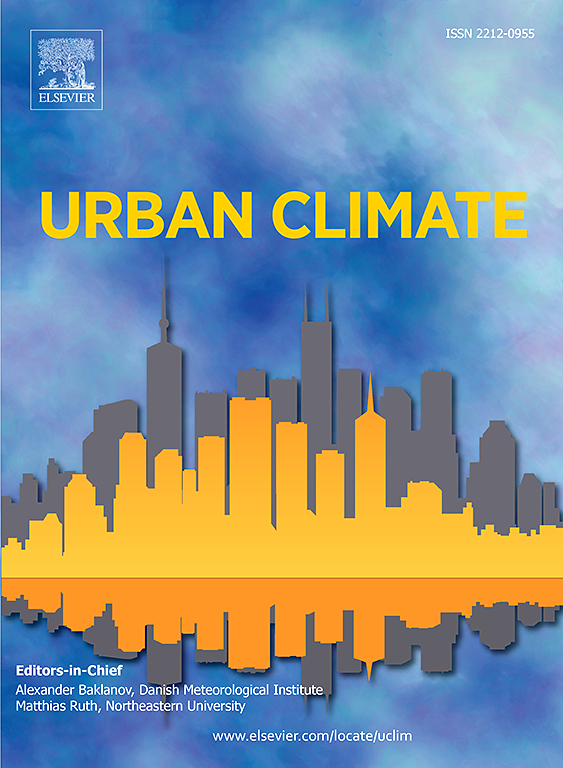利用梯度增强补隙分析德国弗莱堡城市气象站网络的温度和湿度模式
IF 6
2区 工程技术
Q1 ENVIRONMENTAL SCIENCES
引用次数: 0
摘要
气象站网络(wsn)对于研究城市天气和气候的城乡和城市内部变化是必不可少的。然而,由于时间序列中数据缺失导致长期气候统计分析存在偏差。在这里,我们使用极端梯度增强来估算地形复杂的欧洲中型城市(德国弗赖堡)的WSN观测空气温度和湿度时间序列的间隙。通过气象变量、站点和人为制造的1-28天的间隔来评估估算精度。空气温度和相对湿度的平均均方根误差分别为0.46 K和2.51%。模型性能对间隙长度不敏感,但在不同站点之间存在差异,在偏远和非建筑区域误差较大。此外,我们使用空白填充数据研究了2022年9月至2023年8月期间城乡和城市内空气温度和湿度的变化。在研究期间,城市中心比代表性农村地区高1.1 K,蒸汽压低7%。建筑密集区的气象站每年的热带夜数在0到29之间。站点聚类产生的分组不仅可以用土地覆盖和地理邻近度来解释,还可以用地形设置来解释。本文章由计算机程序翻译,如有差异,请以英文原文为准。
Using Gradient Boosting for gap-filling to analyze temperature and humidity patterns in an urban weather station network in Freiburg, Germany
Weather station networks (WSNs) are essential to investigate urban–rural and intra-urban variability of urban weather and climates. However, missing data in WSN time series lead to biases in the analysis of long-term WSN climatic statistics. Here, we use Extreme Gradient Boosting to impute gaps in observational air temperature and humidity time series of a WSN in an orographically complex, mid-sized European city (Freiburg, Germany). Imputation accuracy is evaluated across meteorological variables, stations, and artificially created gaps of 1–28 days. The gap-filling procedure shows good imputation accuracy with mean RMSEs of 0.46 K for air temperature and 2.51% for relative humidity. Model performance is insensitive to gap lengths but varies between stations, with larger errors in remote and non-built-up locations. Moreover, we use the gap-filled data to investigate urban–rural and intra-urban air temperature and humidity variability from September 2022 to August 2023. During the study period, the city center was 1.1 K warmer than representative rural areas, and vapor pressure was 7% lower. The annual number of tropical nights among stations in built-up locations varied between 0 and 29. Station clustering yields groups that are not only explainable by land cover and geographic proximity but also by orographic settings.
求助全文
通过发布文献求助,成功后即可免费获取论文全文。
去求助
来源期刊

Urban Climate
Social Sciences-Urban Studies
CiteScore
9.70
自引率
9.40%
发文量
286
期刊介绍:
Urban Climate serves the scientific and decision making communities with the publication of research on theory, science and applications relevant to understanding urban climatic conditions and change in relation to their geography and to demographic, socioeconomic, institutional, technological and environmental dynamics and global change. Targeted towards both disciplinary and interdisciplinary audiences, this journal publishes original research papers, comprehensive review articles, book reviews, and short communications on topics including, but not limited to, the following:
Urban meteorology and climate[...]
Urban environmental pollution[...]
Adaptation to global change[...]
Urban economic and social issues[...]
Research Approaches[...]
 求助内容:
求助内容: 应助结果提醒方式:
应助结果提醒方式:


